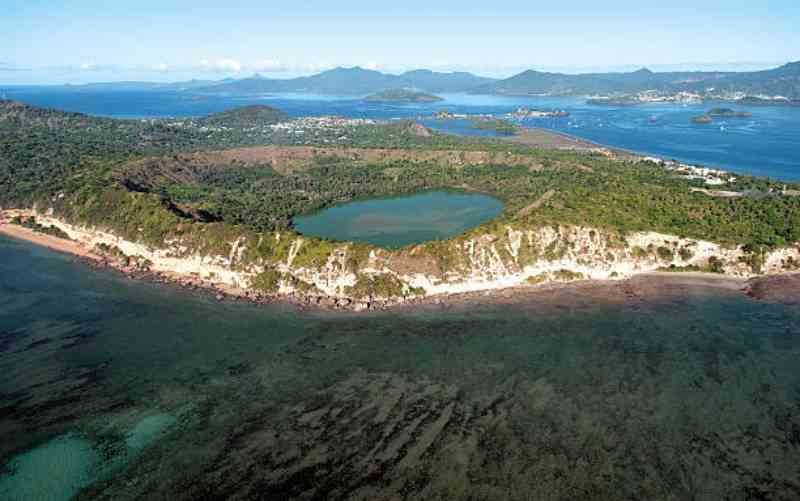
The coral reefs along Kenya’s coast, once vibrant ecosystems teeming with life, are now at a critical tipping point.
Stretching more than 140km along the Indian Ocean, these reefs are home to rich biodiversity and serve as crucial economic resources for fishing and tourism. However, climate change, pollution, overfishing, and unsustainable coastal development are threatening the survival of these fragile ecosystems.
Scientific studies conducted on Kenya’s marine environment paint a grim picture, revealing the rapid degradation of coral reefs, which are struggling to regrow fast enough to keep up with the pace of destruction.
I recently had the opportunity to snorkel in the renowned Malindi Marine Park. Expecting to witness the colourful, vibrant coral gardens that the park was once famous for, I was instead confronted with a devastating scene. Most of the coral was dead—bleached white, brittle, and lifeless. It felt like I was swimming through an underwater graveyard, where the few fish left seemed to be wandering aimlessly, with no reef to call home.
What I saw was a stark reminder of how quickly climate change and human activities are destroying marine ecosystems. It was both shocking and heartbreaking, and it made me realise just how urgent efforts to address the crisis facing Kenya’s coral reefs is.
Coral reefs are often referred to as the “rain forests of the sea” because of their incredible biodiversity. Kenya’s coral reefs support more than 300 fish species, along with a wide array of crustaceans, mollusks, and other marine organisms. These reefs serve as nurseries for many fish species, helping sustain Kenya’s coastal fishing industry. Without healthy reefs, local fish populations could collapse, leading to a decline in food security for the coastal communities that depend on fishing for their livelihoods.
Economically, coral reefs are critical to Kenya’s tourism industry, drawing divers, snorkellers, and marine enthusiasts from all over the world. Marine parks such as Malindi, Watamu, and Kisite contribute significantly to the local economy by attracting international tourists. Additionally, coral reefs act as natural barriers, protecting coastlines from erosion and storm surges, a function that is becoming increasingly important as the effects of climate change intensify.
Scientific research has revealed alarming trends in the health of Kenya’s coral reefs. A study conducted by the Kenya Marine and Fisheries Research Institute in 2020 reported that coral cover along the Kenyan coast has declined from 30 to 50 per cent in the 1970s to less than 20 per cent today. The primary culprit is coral bleaching, a phenomenon driven by rising sea temperatures caused by climate change. Bleaching occurs when corals expel the algae that live within their tissues, which provide the coral with essential nutrients and their bright colours. Without these algae, the coral turns white, and if the stress persists, the coral dies.
The 1998 El Niño event was a turning point for Kenya’s coral reefs, causing widespread coral bleaching, with mortality rates as high as 80 per cent in some areas. Since then, subsequent bleaching events in 2010 and 2016 have inflicted further damage. According to a report by University of Nairobi’s Institute for Climate Change and Adaptation, frequent bleaching events also reduce the ability of corals to reproduce, further hindering reef recovery.
Coral reefs are slow-growing organisms, and their regrowth can take decades. On average, it takes between 10 and 20 years for corals to regrow, but full recovery from a major bleaching event can take up to 50 years or more—if the conditions remain favourable. Unfortunately, in many areas along Kenya’s coast, the conditions are not improving, making it difficult for reefs to regenerate at the pace needed to offset the damage.
In addition to climate change, human activities are accelerating the decline of coral reefs. Overfishing, particularly destructive practices like dynamite fishing and bottom trawling, severely damage the reef structure. These practices not only destroy the coral habitat but also reduce populations of herbivorous fish, which play a critical role in maintaining reef health by feeding on algae that can otherwise overgrow and smother the coral.
Moreover, coastal development is taking a toll on the reefs. The clearing of mangrove forests, which act as nurseries for many marine species and help filter pollutants from runoff, has resulted in increased sediment and pollution reaching the reefs. These pollutants suffocate coral, making it harder for them to recover from bleaching and other stressors. As Kenya’s coastal areas become more urbanised, the impact on nearby reefs grows, compounding the challenges these ecosystems already face.
Despite the dire situation, there is hope for Kenya’s coral reefs. Several marine protected areas (MPAs) have been established, including Malindi Marine Park and Watamu Marine National Reserve. These MPAs restrict fishing and other destructive activities, giving coral reefs a chance to recover. According to research by KMFRI, coral reefs in MPAs have shown signs of resilience, with some areas experiencing partial regrowth.
Coral restoration initiatives are also showing promise. In these projects, fragments of coral are grown in nurseries and later transplanted back into the ocean to help regenerate damaged reefs. These restoration efforts are still in their infancy, but early results indicate that they can contribute to the recovery of degraded reef areas.
Stay informed. Subscribe to our newsletter
Needless to say, Kenya’s coral reefs are at a critical juncture. My experience in Malindi revealed the fragility of these ecosystems and the severity of the challenges they face. Coral reefs take decades to regrow, but with current pressures, they may never fully recover without significant intervention. However, with coordinated local and global efforts, there is still hope to revive these underwater ecosystems before they are lost forever. The time to act is now, before the underwater graveyards become permanent.
 The Standard Group Plc is a
multi-media organization with investments in media platforms spanning newspaper
print operations, television, radio broadcasting, digital and online services. The
Standard Group is recognized as a leading multi-media house in Kenya with a key
influence in matters of national and international interest.
The Standard Group Plc is a
multi-media organization with investments in media platforms spanning newspaper
print operations, television, radio broadcasting, digital and online services. The
Standard Group is recognized as a leading multi-media house in Kenya with a key
influence in matters of national and international interest.
 The Standard Group Plc is a
multi-media organization with investments in media platforms spanning newspaper
print operations, television, radio broadcasting, digital and online services. The
Standard Group is recognized as a leading multi-media house in Kenya with a key
influence in matters of national and international interest.
The Standard Group Plc is a
multi-media organization with investments in media platforms spanning newspaper
print operations, television, radio broadcasting, digital and online services. The
Standard Group is recognized as a leading multi-media house in Kenya with a key
influence in matters of national and international interest.










